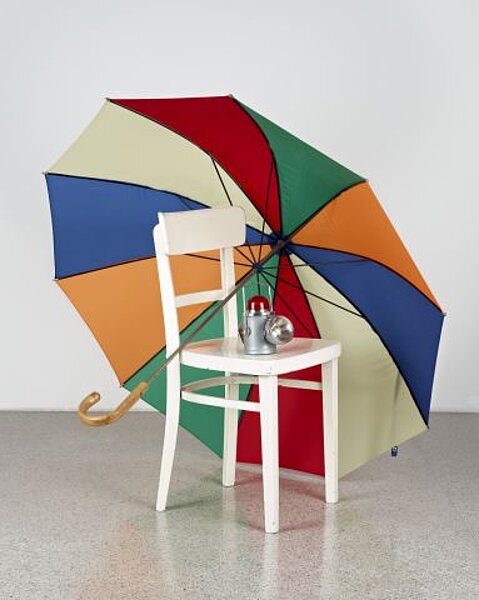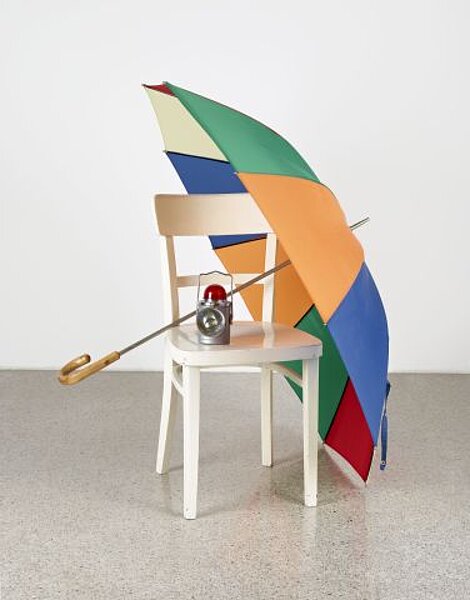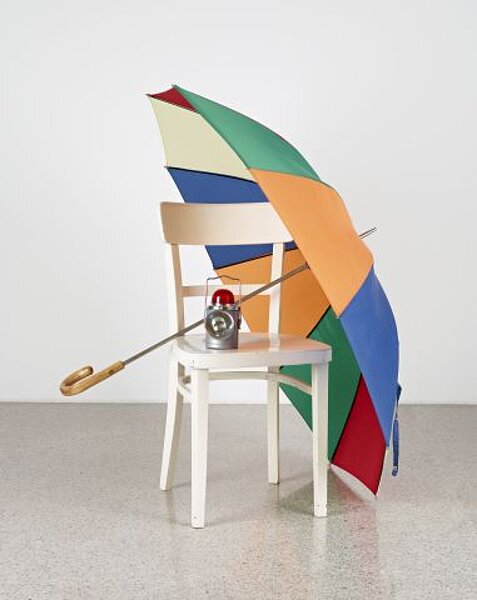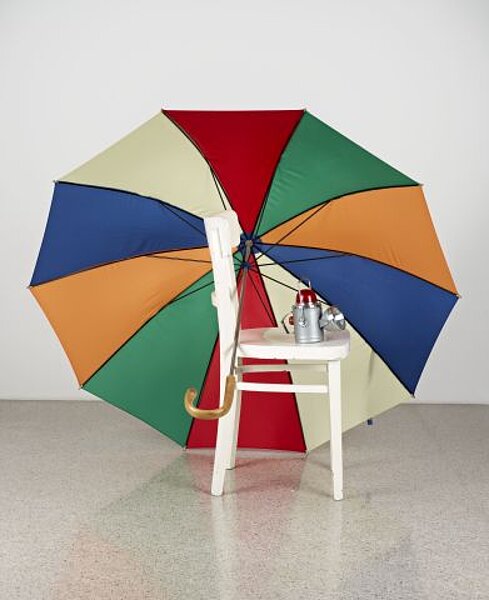
Brecht, George
The Book of the Tumbler on Fire, Volume I, Chapter VIII, Page 3, Footnote 19
1969
| Object description | Chair with umbrella and warning light |
|---|---|
| Dimensions |
Objektmaß:
height: 115 cm,
width: 85 cm,
depth: 110 cm
Detailmaß:
height: 83 cm,
width: 44 cm,
depth: 43 cm,
height: 4 cm,
width: 102,7 cm,
depth: 18 cm,
height: 14 cm,
width: 26,5 cm,
depth: 25,7 cm
|
| Year of acquisition | 1978 |
| Inventory number | P 111/0 |
| Creditline | mumok - Museum moderner Kunst Stiftung Ludwig Wien, ehemals Sammlung Hahn, Köln |
| Rights reference | Bildrecht, Wien |
| Further information about the person | Brecht, George [ULAN] | Brecht, George [GND] |
| Literature |
museum moderner kunst.SAMMLUNG HAHN Museum moderner Kunst Stiftung Ludwig Wien |
A wooden armchair with a lamp and an umbrella on it—called The Book of the Tumbler on Fire, Volume I, Chapter VIII, Page 3, Footnote 19. Rather mysterious. Artist George Brecht first presented his Book of the Tumbler on Fire in the Fischbach Gallery in 1965 in New York. He combined objects that together tell no story. They are like inexplicable encounters, a secret meeting of things that have come together to whisper comparatively. Or are they props from a performance we have just missed? Or an experimental arrangement for which we are missing the instructions? The objects with which the artist has creates his installations remain confusing, while the titles of the works offer no help. Brecht replaces traditional definitions of artworks, whether seen as paintings or sculptures, with concepts from literature. He declares his whole artistic oeuvre to be a “book.” His installations compiled of diverse materials thus correspond to the volumes and chapters of his book and are the pages and footnotes of his personal projects. He spent more than a decade working on his “book,” adding a new page with each new work. George Brecht is an unconventional artist in many ways. For many years he worked in industry as a chemist, but also attended a course in Experimental Composition in 1958 and 1959 with John Cage in New York, while still in his job. He played an active and influential role in Fluxus actions and was co-initiator of the legendary YAM Festival. This one-year festival began in May 1962 and took place in New York and on a farm. Participating artists included Allan Kaprow, La Monte Young, Wolf Vostell, and Dick Higgins.
© mumok – museum moderner kunst stiftung ludwig wien



